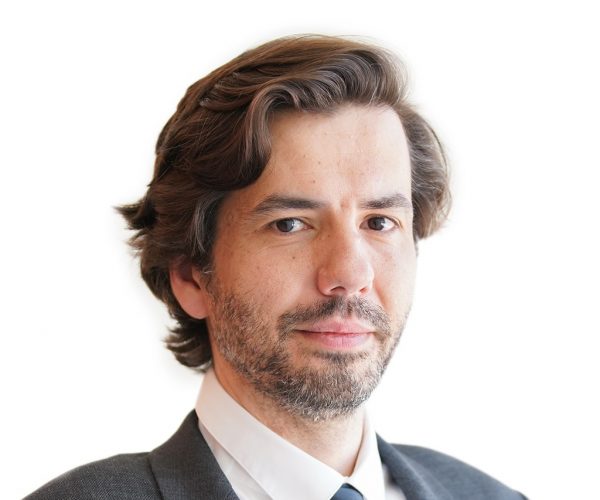Eduardo García González is Manager, European ATM Coordination and Safety at the CANSO Europe Region Office
How can CANSO help air navigation service providers (ANSPs) integrate UTM into their ATM systems and accelerate the adoption of UTM networks globally?
CANSO – Civil Air Navigation Services Organisation – is the global voice of the air traffic management industry. As the industry association, our mission is to bring the world’s air navigation service providers, leading industry innovators and air traffic management specialists together to share knowledge, develop best practice and speed up innovation.
CANSO’s associate members supply goods and services to the air traffic management industry, and also unmanned aviation. This includes leading UTM providers and drone manufacturers are also CANSO Members.
This puts CANSO in a unique position to facilitate and promote collaboration between all stakeholders (for example, ANSPs, regulators, States, UTM service providers, airlines, airports, industry suppliers, drone manufacturers and operators), and design a future airspace that works for all.
CANSO is playing a leading role in promoting the integrated skies, leading participation ICAO’s unmanned aviation focus groups, and in regional initiatives like and the We Are All One in the Sky in Europe. CANSO is also coordinating the ANSP contribution to all the EASA rulemaking activities.
What do you see as the major hurdles – technical, industrial, regulatory, institutional – to developing UTM services and how can they be overcome?
In my opinion the main challenge is for all unmanned and manned aviation stakeholders to realise and embrace the fact that we need to work together to strive for a technical and regulatory framework that takes into account the full breadth of requirements. After all, we are all important stakeholders, and by collaborating effectively we will overcome the hurdles that lie ahead, no matter how big they are.
How challenging is it to define clear roles for ANSPs in the UTM ecosystem?
It is important to have a flexible and performance-based framework to accommodate an evolving industry. The drone industry is in its early stages and further developments are happening at a dynamic pace. The UTM framework must allow this to continue and not adopt a too prescriptive approach that risks setting the industry on a particular course or excluding certain players before its full operation is properly understood.
The UTM architecture must be proven sustainable, scalable and robust by proper R&D projects. Moreover, a too prescriptive approach, at this stage of UTM and drone industry maturity, would block solutions that already exist or are being implemented.
Naturally, one specific challenging issue is to clearly define the safety responsibilities and liabilities of all the actors: UTM/U-Space Service Providers (USSP), Common Information Service Providers (CISP) and Air Traffic Service Providers (ATSP). The UTM ecosystem will also rely on greater digitalisation and higher levels of automation than today’s air traffic services.
How should we coordinate UTM adoption within the wider digital airspace management concept (as defined in the European ATM masterplan, for example)?
The main objective of the aviation industry today is to recover from the pandemic-related crisis while maintaining the highest level of safety in the sky. It is equally clear that we should not allow COVID-19 to stop innovation in aviation, or progress on building our future skies.
We must continue to modernise and speed up the digital transformation of air traffic management (ATM) to create the Digital European Sky, promoted by the whole European aviation sector. This will contribute to a greener, safer, more efficient, and more secure air traffic management, as well as facilitate the safe integration of all new airborne vehicles, including drones, supersonic aircraft, space vehicles and more.
Of course this task won’t be done easily, but it’s encouraging to see the progress we’re already making, particularly when it comes to developing an integrated and digital airspace.
CANSO has played an active role in supporting the development of the European ATM Master Plan and Single European Sky ATM Research (SESAR). SESARS’s future European Partnership for integrated air traffic management is expected to contribute to the achievement of the digital European Sky and the development of U-Space as Europe’s unmanned aircraft system traffic management. The Commission has invited unmanned aviation stakeholders to join a High-Level Partnership Proposal, and CANSO is committed to ensuring this industry provides a clear and coordinated response.
Will UTM replace ATM one day – or will the services be merged?
We need an integrated ATM system, combining ‘traditional’ ATM with unmanned air system traffic management (UTM) systems. UTM provides an unparalleled opportunity to experiment, test and validate some of the key architectural principles and technology enablers of the future Digital European Sky, before incorporating them into the broader ATM ecosystem. It therefore provides an important vehicle for change in a direction which CANSO is fully committed.
Do we have a clear view on target levels of safety for UTM systems and whether counter-UAS services should be integrated into the UTM network (and by whom) – or should these be individual regulator/ANSP competencies?
Like many people I foresee a UTM ecosystem where there will be a mix of vehicles flying, some with passengers and others without. Our objective can only be to maintain and improve today’s high safety standard.
The protection of airports and aerodromes and the area in their vicinity regarding the unlawful use of drones must be clearly addressed. Entities responsible for policing illegal acts must be appointed, and local particularities identified (e.g. geography, environment, obstacles and traffic flows).
There is also an emerging and urgent need for standardisation, through the creation of industry standards, on counter-drone technologies (C-UAS or malicious). To prevent any disruption, a two-fold strategy should be implemented: the airspace around an airport/aerodrome needs to be protected, based on risk, to prevent unauthorised drones from entering it and unauthorised drone activities need to be detected at the earliest possible stage.




